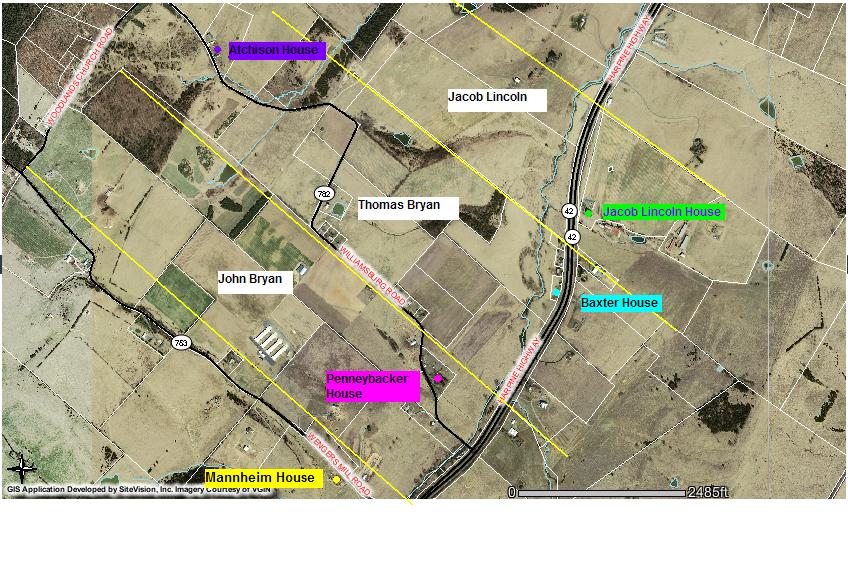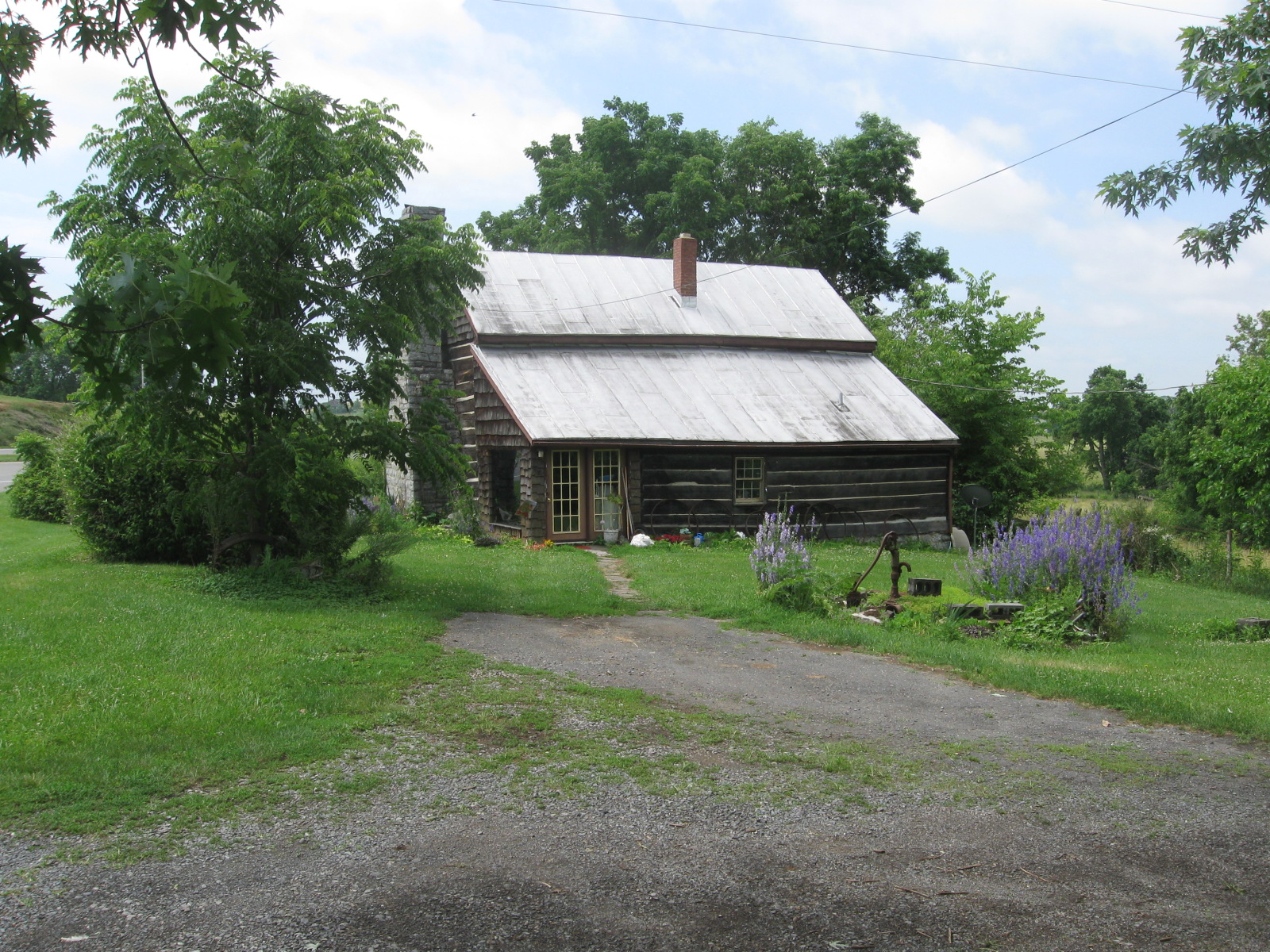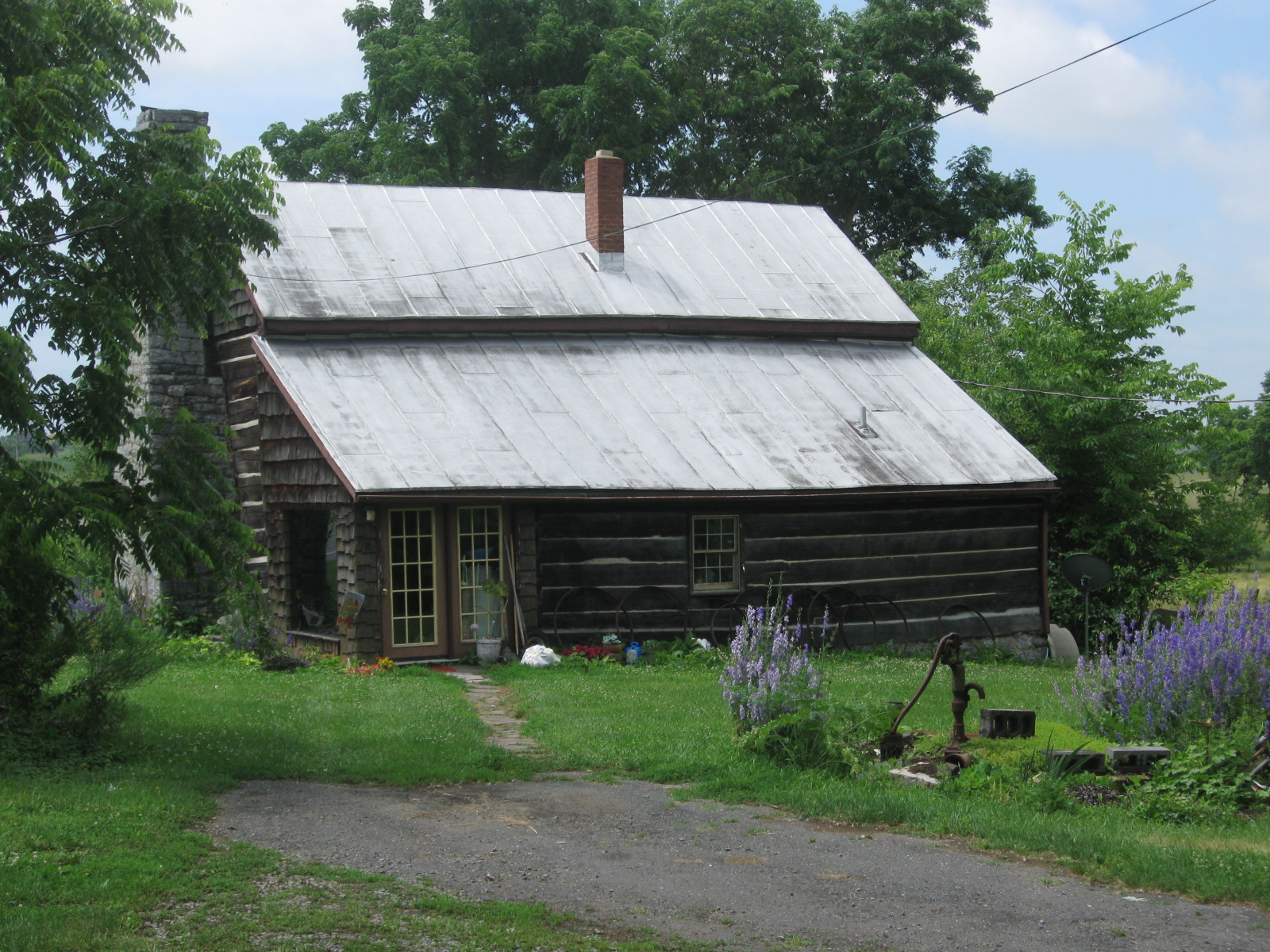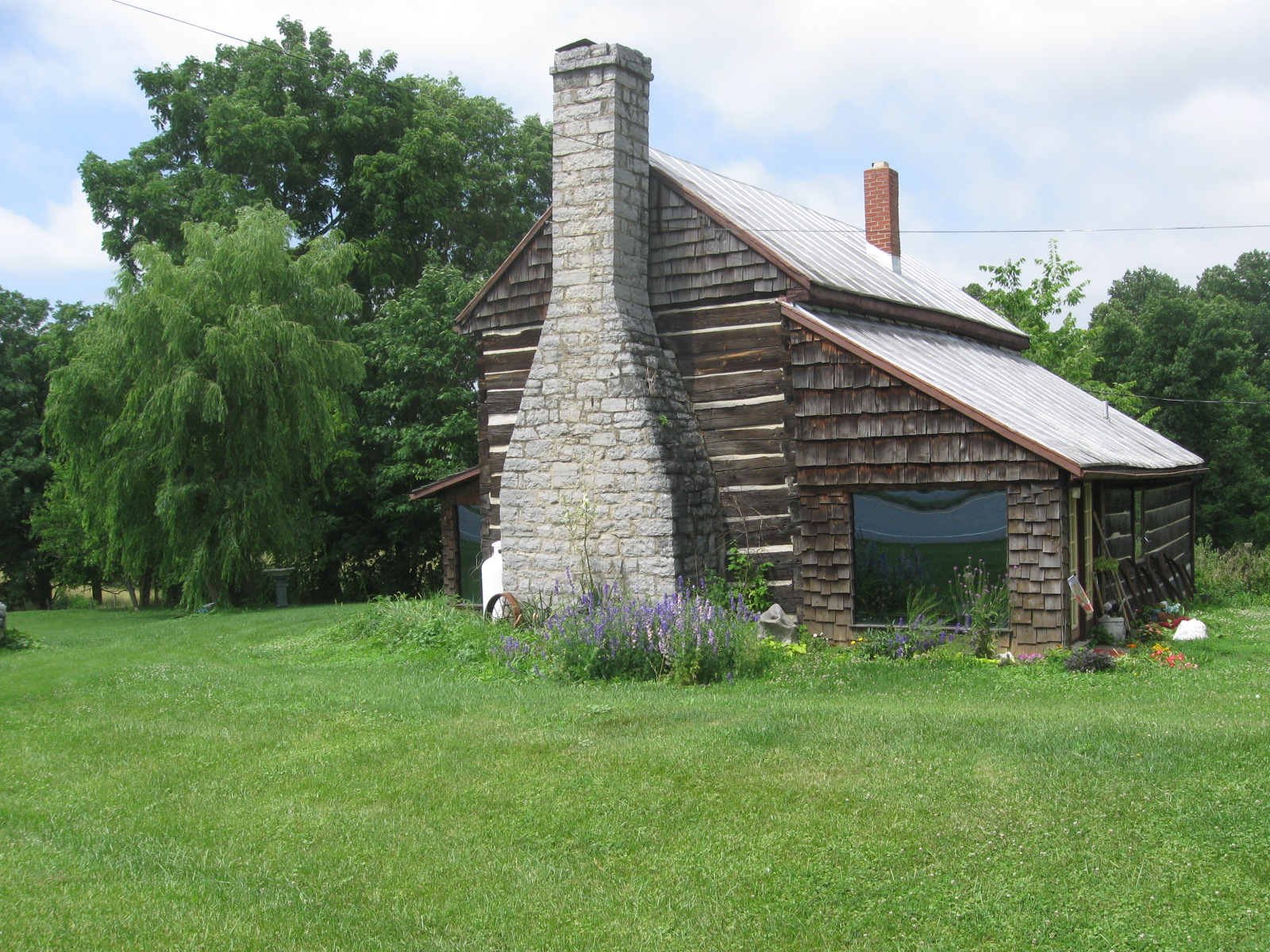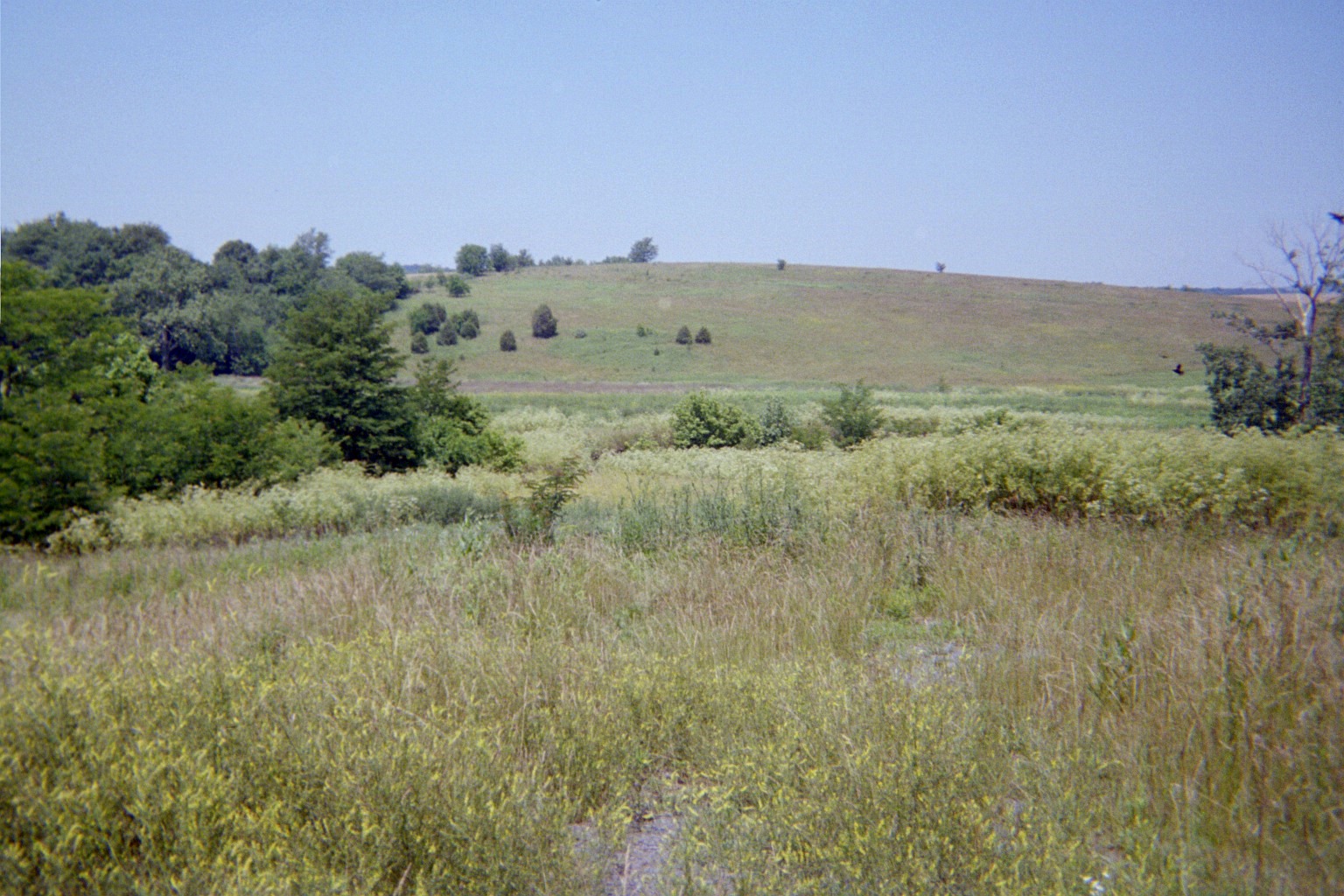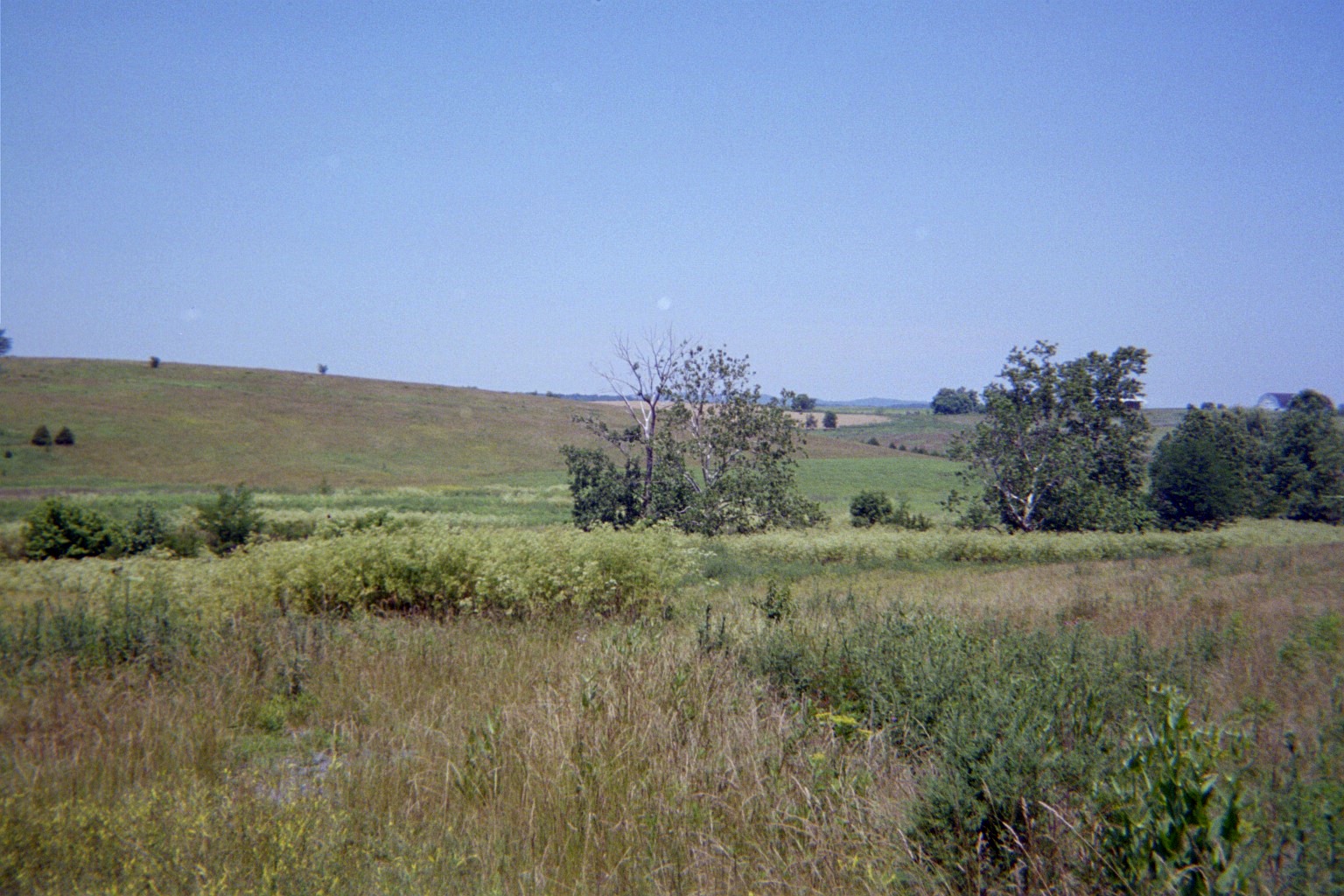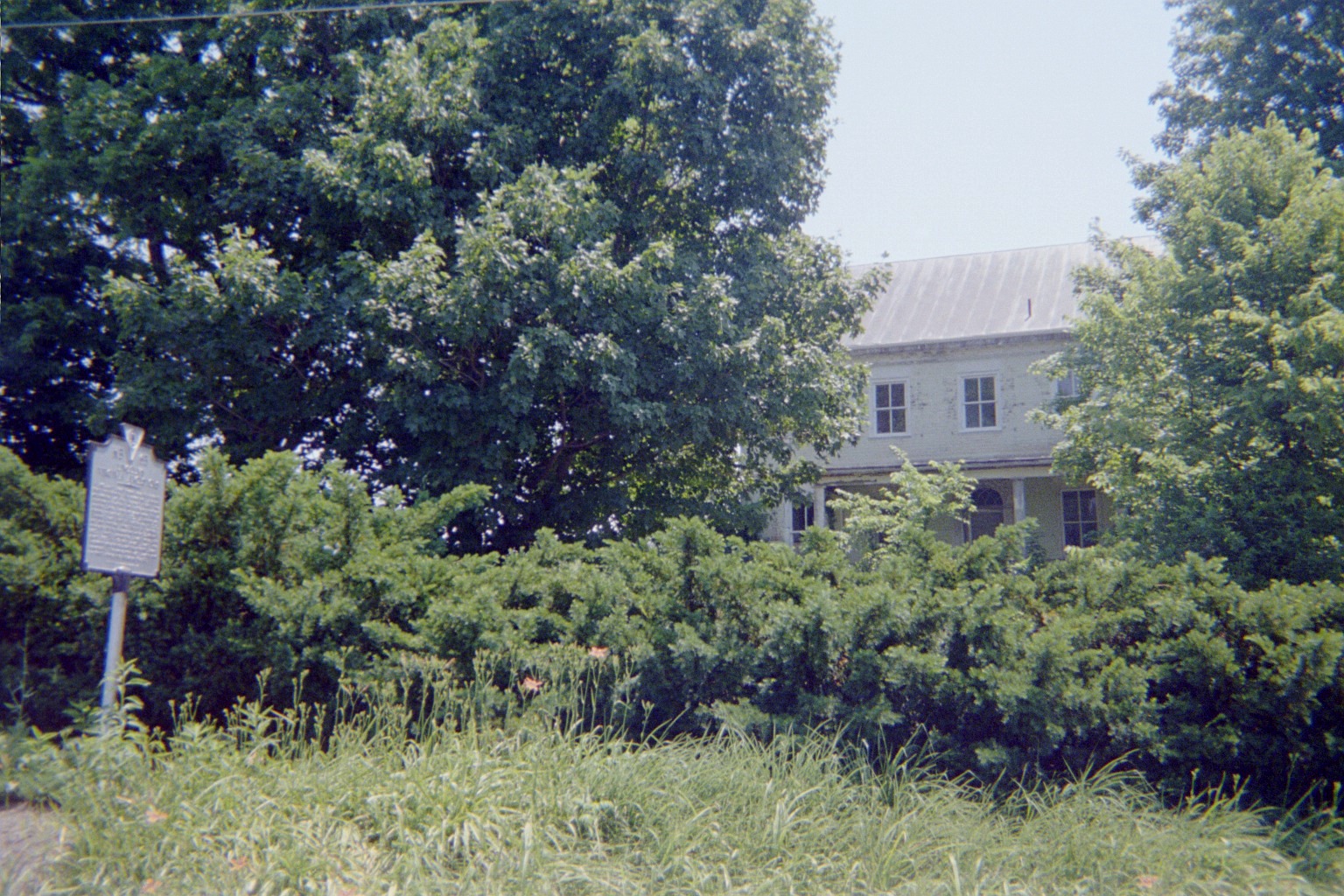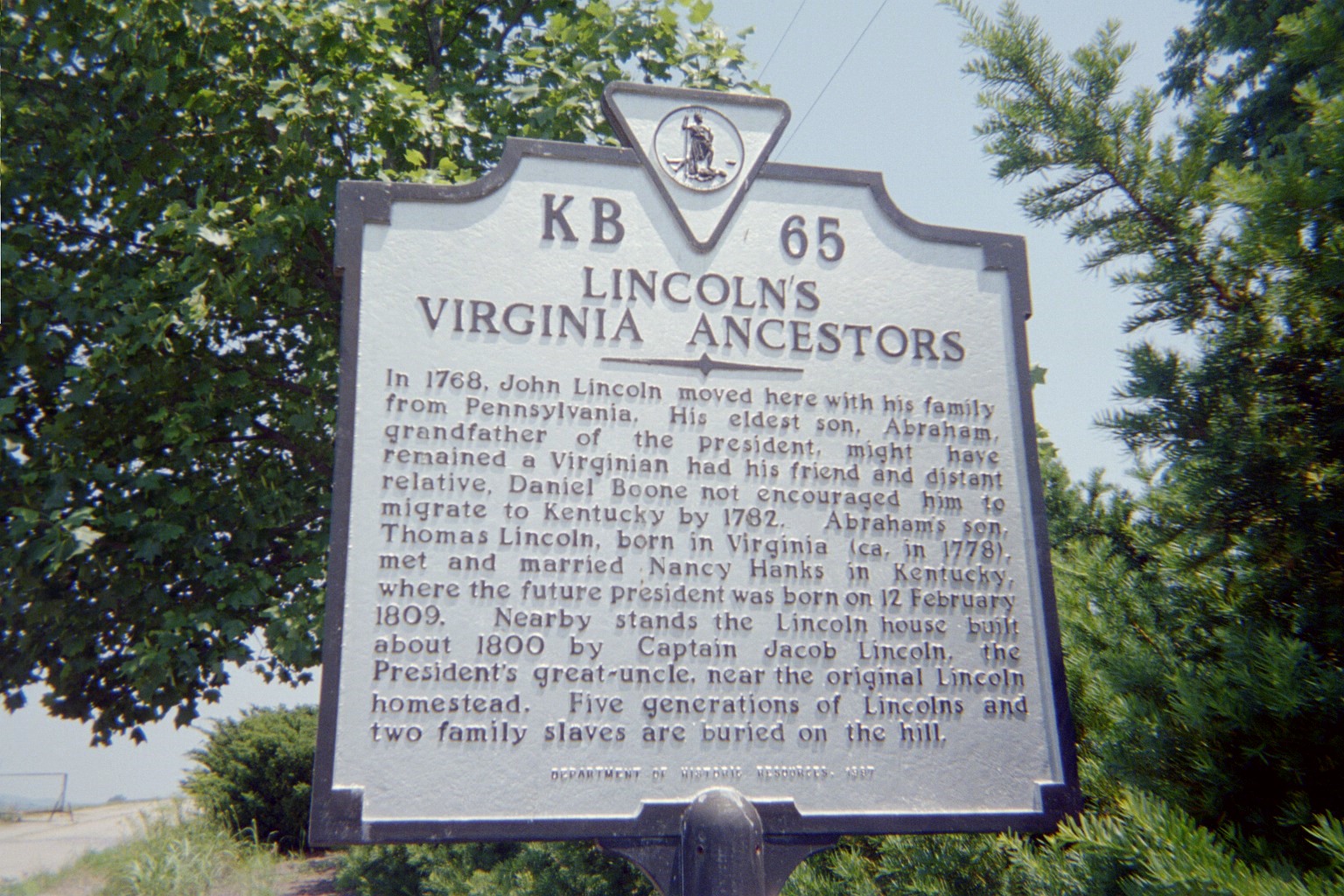The text to the right is a portion of a history of the John Bryan
house that was found at the Historical Society in
Harrisonburg. I do not know who the author of this history was. I would be pleased
to provide proper credit if I can determine the authorship of the history.
The name of the house has come down as the Lincoln-Penneybacker
house rather than as the John Bryan house. This history
suggests that the house was built by the Lincolns after they purchased
the land from the Bryans. But the Rockingham County histories of
Dr. John W. Wayland suggest that the house was originally built by
John Bryan before the property was sold to the Lincolns.
I do not know which history is correct. I wonder if bits of two different histories might
have become co-mingled. There was definitely a Jacob Lincoln house and
it is still there. It's on the original Lincoln land just northeast
of the Bryan land. In any case, the following history to the right
is correct that the
house now known as the Lincoln-Penneybacker
is southwest of the original Lincoln land and that
the land containing the Lincoln-Penneybacker
house was purchased by the Lincolns
from the Bryans about 1800.
The only real question is whether the house was built before
1800 by the Bryans or after 1800 by the Lincolns.
|
Lincoln Hall
(Lincoln-Pennybacker House)
Route 1, Box 211
Linville, Virginia 22834
This house stands on one of the most interesting sites in Rockingham County, part of a vast
tract of 8,000 acres patented in 1739. In 1744 the O'Bryans (later Bryan) bought 600 acres and
erected a cabin, probably near the spring. (Remains of the spring house are visible at the
bottom of the lawn.)
In 1751 Daniel Boon's (sic) family left Reading, PA, where he was born, to go to North Carolina.
They spent a winter on Linville Creek, and local tradition unanimously asserts that it was here,
with the Bryans; uncontradicted tradition is usually reliable. Boone's wife Rebecca Bryan, was
doubtless a relative of the people who lived her, although the relationship has not been traced.
The road past the house is an old Indian trail from the Shenandoah Valley to Ohio. The most
distinguished traveler who ever passed by no doubt was George Washington, who came
through on 30 September, 1784, en route from an inspection of land granted to him near
Uniontown, PA. He noted that he passed "one Bryan's" evidence that he stopped long enough
to learn the name of the owner.
Some time around 1800, ownership passed from the Bryans to the Lincolns. About 1767 John
Lincoln, great-grandfather of the President, came to Linville Creek and bought land about a mile
below (north of) this house. His grandson, the President's father, born on that land (1778), was
taken to Kentucky at the age of three.
John Lincoln's son, Jacob Sr., about 1800 built the so-called Lincoln Homestead, which is not
on the original Lincoln land, but immediately to the south of it, and the latter's son, Jacob Jr.,
built the brick part of Lincoln Hall about 1823. Jacob Jr. married a widow with two children; she
bore him nine more. In 1840 she went insane and spent the last 26 years of her life in what is
now Western State Hospital in Staunton. Jacob died under unexplained circumstances in Ohio in
1848; his body discovered when vultures were feeding on it in a field.
Jacob dead and Nancy incompetent, Dr. Richard Maupin, who had married Mary Elizabeth
Lincoln, Jacob's niece, was appointed guardian of the minor children. The Maupin bought out
the children as they came of age and thus gained possession of the house and land. Dr.
Maupin died in 1855, leaving a widow and three children, and in 1865 Elizabeth married John D.
Pennybacker, by whom she had three more children.
In 1874 Elizabeth's mother died and the Lincoln Homestead was sold to settle the estate. From
her share of the proceeds, Lizzie, as she was called, tore down half of the Jacob Lincoln house
(which originally had four rooms strung out railroad style) and added the frame part and the
porch to create the house as it stands today.
For some reason Lizzie did not want any doors cut between the parlor, the dining room, and the
kitchen. Accordingly, only a serving shelf connected the kitchen and dining room, but a door
was cut between the dining room and the parlor over her objections. Lizzie still had her way;
she locked it and threw away the key! The door was never opened from 1874 to 1939, after the
death of Lizzie's daughter, Kate Pennybacker. The only access to kitchen and dining room was
via the porch, regardless of outside temperature, which in winter can fall below zero.
Mary Elizabeth Lincoln Maupin Pennybacker inherited a house full of Lincoln furniture, linens,
glass, and china, which she passed on to her daughter Kate. Kate, born in this house in 1868,
spent her life here, much of it alone, until her death in 1938. At the time the contents were
dispersed and the property passed out of the hands of the Lincolns.
During Miss Kate's lifetime, Dr. John Wayland, a local historian, brought several interesting
visitors to the house. Ida Tarbell, Hamlin Garland, and Carl Sandberg all came to the Valley to
do research on the Lincolns, and very likely all three came to this house with Dr. Wayland. The
most interesting, however, came on the train to Harrisonburg in 1903, rented a carriage, and
drove out. He introduced himself as a member of the Lincoln family and was bidden to come in.
After some minutes of conversation about the family, he was asked what relationship he was to
Old Abe. ""He was my father. I am Robert Todd Lincoln."
The house itself has ho particularly gripping architectural features, although the hand-wrought
iron hinges on the study door (the small room on the south side) are interesting. You will note
that the door is hand-planned. The parlor has an imported black Italian marble mantel and the
original wallpaper (a jackleg job of hanging if ever there was one), now faded and grown shabby
with the years. In the basement the original 1823 beams are visible, and the original shingle
roof is still in place beneath the tin one. The rear door of the hallway (leading to the brick
portion of the porch) is patched where Miss Kate shot through it. About 1932 her brother
George returned to Rockingham County after 40 years of wandering. He inquired whether any
of the family still lived in the old house. "Yes, your sister's there." Word was sent out to the
nearest telephone, at Wenger's Mill (Miss Kate was too poor to afford one), and someone
trudged over to tell Miss Kate her brother wanted to come out for a visit. "Tell him to come."
For whatever reason, George did not arrive until 9:30 pm or so, and when he knocked, Kate,
standing on the second floor with a shotgun, said, "Who's that?" "Your brother George."
"Anybody who comes into my house comes in the daytime. You come back tomorrow."
Reports are unclear about what happened next, but she shot through the door and hit him,
wounding him slightly. So far as is known, he never came back to the house he was born in.
|
|
